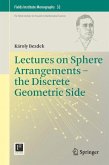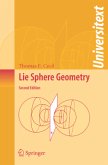High Quality Content by WIKIPEDIA articles! In geometry and combinatorics, a simplicial (or combinatorial) d-sphere is a simplicial complex homeomorphic to the d-dimensional sphere. Some simplicial spheres arise as the boundaries of convex polytopes, however, in higher dimensions most simplicial spheres cannot be obtained in this way. The most important open problem in the field is the g-conjecture, formulated by Peter McMullen, which asks about possible numbers of faces of different dimensions of a simplicial sphere.It follows from Euler's formula that any simplicial 2-sphere with n vertices has 3n 6 edges and 2n 4 faces. The case of n = 4 is realized by the tetrahedron. By repeatedly performing the barycentric subdivision, it is easy to construct a simplicial sphere for any n 4. Moreover, Ernst Steinitz gave a characterization of 1-skeleta (or edge graphs) of convex polytopes in R3 implying that any simplicial 2-sphere is a boundary of a convex polytope.








